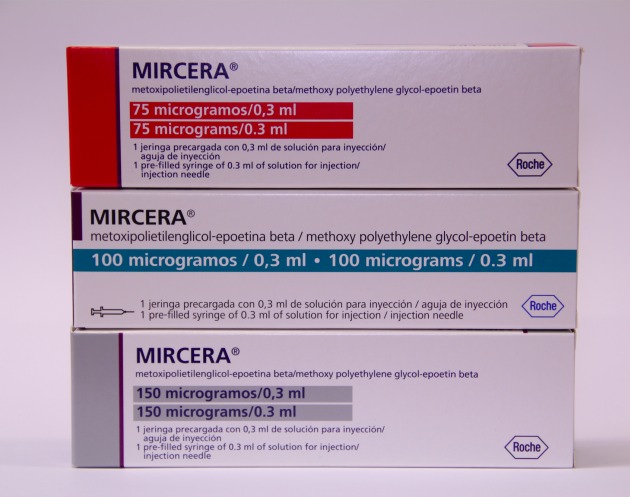
Roche Pharmaceuticals quickly rejected claims that Roche planted secret molecule in Mircera which allowed for detection of the CERA class drug at the 2008 Tour de France. John Fahey, WADA president, told the Australian Broadcasting Company about the addition of the molecule that made it easy for drug testers to detect use of the performance enhancing drug.
Roche Pharmaceuticals spokesperson, Martina Rupp, strongly denied the addition of any special molecule to Mircera in an email response made within hours of Fahey statements.
“The information that a special molecule has been added to Mircera is wrong,” Rupp said in an e-mail.
Roche explained to CyclingNews.com that the extent of their cooperation with WADA involved providing samples of Mircera and assay reagents.
Roche has provided samples of Mircera and assay reagents to the World Anti-Doping Agency (WADA) to help ensure that WADA laboratories will be able to carry out reliable anti-doping testing.
Roche further clarified its relationship with the World Anti-Doping Agency (WADA) in an official statement sent to Bloomberg News.
Roche is aware that a leading competitor in the Tour de France is reported to have tested positive for Mircera, Roche’s new erythropoiesis stimulating agent (ESA) approved a year ago in the European Union. Roche has worked in collaboration with the World Anti-Doping Agency since 2004 to assist in their aim of controlling the illegal use of ESAs and specifically Mircera. Roche has provided the information to WADA and to a WADA- accredited laboratory to detect its new ESA. We are pleased that this collaboration has been productive.”
A WADA spokesman subsequently contradicted the WADA president’s statements to ABC Radio suggesting that Fahey’s comments were misconstrued or misinterpreted.
No marker was inserted in the substance,” the WADA spokesman said. “Thanks to the fruitful cooperation of the manufacturer of this substance (Roche) and of WADA-accredited laboratories, which started in 2004, WADA received the molecule well in advance and was able to develop ways to detect it, including through the current EPO detection method.”
Yesterday, I was shocked that a drug company would even consider secretly adding molecules to consumer drug products; it was disturbing to think that a drug company was intentionally failing to disclose ingredients to consumers (and possibly even regulators).
I am relieved to hear that the pharmaceutical giant did not conspire with WADA, an organization known for their anti-steroid and anti-doping witch hunts, to covertly manipulate drug products.
I was surprised that few bloggers had any problem with such a plot. Apparently, legal, health, privacy, and regulatory concerns fall by the wayside when it comes to catching athletes who dope. I read on Trust But Verify that one blogger felt that this was actually the proper way to go after dopers.
This is the right way to catch drug cheats; not witch hunts.
Steroid Nation was disappointed that Fahey’s “good idea” was not implemented by Roche.
So apparently no stealth molecule in the CERA drug allowing detection. A good idea not implemented.
But it was good to see Rant agree that planting secret molecules would be “problematic.”
Adding special markers to drugs may be problematic, in that it runs the risk of further unintended consequences. All drugs have side effects. Any drug maker worth their salt would want to minimize the possibilities of those side effects. Adding extra stuff into the drug, merely for the convenience of the anti-doping agencies could, conceivably, expose legitimate users of the medication to extra risks. Not a good business model, especially in our litigious age.
The WADA and Roche dance today was very interesting. John Fahey’s comments about the planted molecule are baffling in retrospect. Why would he pull something out of his ass that was so misleading and (allegedly) false? What if there really are secret trojan molecules in our drugs? What is Fahey accidentally let the cat out of the bag?! What is today’s events were an organized coverup?
No – it couldn’t be true! I am not in the habit of believing statements from WADA (especially when they talk about the foolproofness, accuracy and fairness of their tests); so why should I start believing Fahey today? :-)
About the author
Millard writes about anabolic steroids and performance enhancing drugs and their use and impact in sport and society. He discusses the medical and non-medical uses of anabolic-androgenic steroids while advocating a harm reduction approach to steroid education.

Leave a Reply
You must be logged in to post a comment.